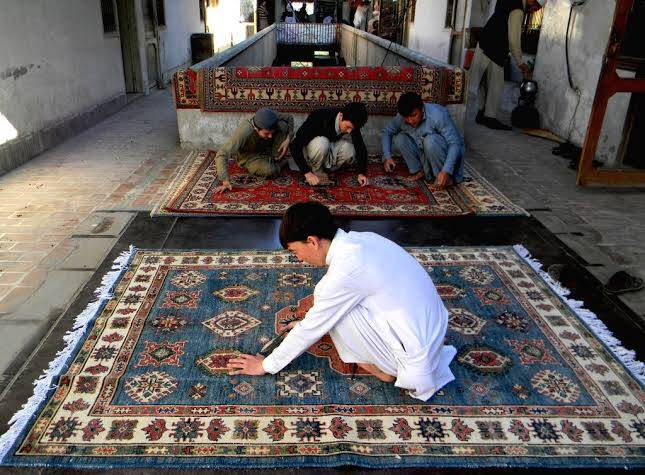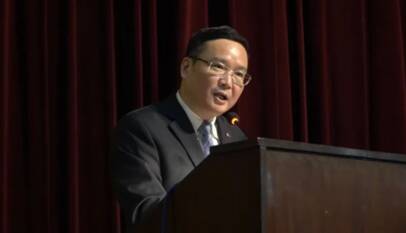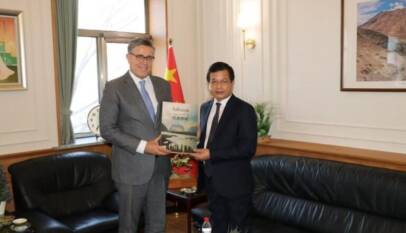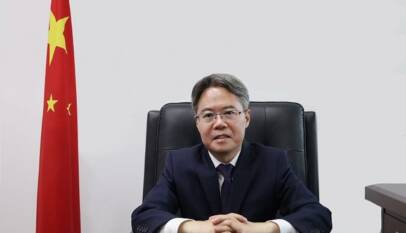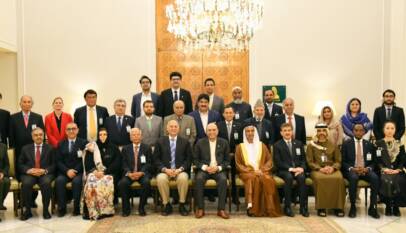Pakistani hand-made carpets attract attention during shanghai exhibition
During an exhibition themed “Image-Making” recently opened in Shanghai center at Baoku Art Centre to mark the 70th anniversary of the establishment of diplomatic ties between China and Pakistan, Pakistani hand-made carpets attracted the attention of Chinese buyers. Such kind of events are pivotal to boosting cultural cooperation between two neighbours since Pakistani hand-made carpets are one of its cultural treasures. These Cultural exchanges date back to the era of ancient silk road when Chinese merchants used to trade silk via this Silk Road to Pakistan.
An exhibition themed “Image-Making” recently opened in Shanghai center at Baoku Art Centre to mark the 70th anniversary of the establishment of diplomatic ties between China and Pakistan, according to China Economic Net.
With Pakistani carpet art collection, Chinese contemporary paintings and images as carriers, the exhibition aims to carry out dialogue between two ancient civilisations of the silk road, reveal the connotation of “community with a shared future for humanity”, and provide inspiration for the development of art globalisation in the new era.
“I am very happy to see such an exhibition and I would like to thank the organisers for promoting cultural exchanges between China and Pakistan.
The year 2021 not only marks the 70th anniversary of our bilateral friendship, but also the 100th anniversary of the founding of the Communist Party of China.
The government and the people of Pakistan are appreciative of the contribution of CPC in serving its people wholeheartedly and hope that in the future, the development of the two countries will go further and reach a new climax,” this was stated by Hussain Haider, Consul General of Pakistan in Shanghai at the opening ceremony.
“Handmade carpet is one of Pakistan’s cultural treasures. Pakistani handmade carpets are made of wool and silk, with exquisite and varied patterns. Along the ancient Silk Road, Chinese merchants exchanged silk for wool carpets in Pakistan. After the handmade carpets were introduced to China, Chinese weavers combined Pakistani weaving techniques with traditional Chinese craft of hand-knitting carpets. This is a kind of cultural interaction,” said Zubair Jan, one of the exhibition designers and a collector of the Pakistani carpet art pieces.
The video and part of photography works on display were created by Li Rongkai, a photographer and director of art films in China, also the curator of the exhibition. He hopes to present a wonderful dialogue between Chinese and Pakistani art through narration, visual presentation and multimedia interaction. “The different histories, cultures and social systems are as old as human societies, and they are the inherent features of human civilisation. Due to the different cultural backgrounds, the art exhibitions of China and Pakistan show their differences. Therefore, we adhered to the philosophy of seeking harmony without uniformity while preparing the exhibition,” said Joshua Gong, academic adviser of the exhibition. “There will be no human civilisation without diversity, and such diversity will continue to exist for as long as we can imagine. We should respect each other, and seek common ground while reserving differences,” Gong told China Economic Net.
“In the future, we can also conduct in-depth cultural exchanges in all directions by holding forums, academic seminars, co-producing documentaries and releasing publications. We hope to continue to enhance mutual understanding and interaction, so that cultural practitioners from both countries can unite closer,” Gong added.
Chinese envoy Zhao Shiren urges students to uphold integrity and strengthen China-Pakistan ties
LAHORE:The Consul Generals from several countries and other distinguished guests attended …



